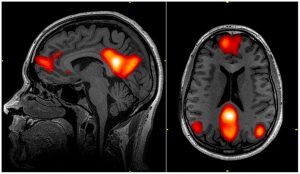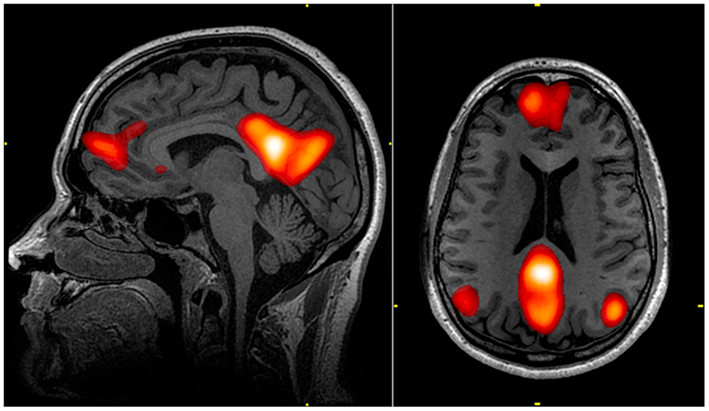This post is also available in Dutch.
There’s a growing amount of evidence that “magical” mushrooms have potential mental health benefits, leading us to wonder what’s actually happening inside the brain? So, let’s find out…
DISCLAIMER: The following research results need to be replicated and, if confirmed, more research needs to be carried out regarding possible 1) negative effects, 2) long term effects, and 3) safe ways to optimally use the drug for medical purposes. We are not doctors, and readers should not self-experiment with drugs for any of the following symptoms.
In a previous blog, we shared recent findings that the hallucinogenic active compound in “magical” or psychedelic mushrooms, psilocybin, can be used to treat several mental disabilities. These disabilities range from severe cluster headaches, to depression and anxiety, to even addictions like alcoholism. So if psilocybin can positively influence these disrupted mental states, what’s happening underneath the surface?
The study
In 2012, Robin L. Carhart-Harris and fellow scientists in the UK and Copenhagen, carried out two experiments to see what occurs inside the brain as it goes from a normal state to a psychedelic one, after a moderate dose of psilocybin was given intravenously. Two experiments were carried out on two pools of 15 healthy participants. Using an MRI machine, the researchers measured brain activity using two indirect and noninvasive methods to look at blood flow changes and oxygen consumption within the brain.
The hypothalamus
The researchers observed a decrease in blood flow in the hypothalamus. The hypothalamus is a deep brain structure that helps manage our hormones, influencing our mood and stress levels (See previous blog on stress). Interestingly, many studies have linked cluster headaches to an overactive hypothalamus. This link might explain why individuals that take psilocybin find relief from their headaches: reduced blood flow could reduce overactivity.
Other studies also reported that an overactive hypothalamus can lead to an increase in certain hormones that influence stress and mood, which could lead to anxiety and depression. These findings might also explain why psilocybin could be taken to treat symptoms of these kind.
The default mode network
 The blob in the front (left-left, right-above) of the brain is the ‘mPFC’, and the bigger blob in the back is the ‘PCC’ and form part the Default Mode Network. Image by John Graner via Wikimedia Commons.
The blob in the front (left-left, right-above) of the brain is the ‘mPFC’, and the bigger blob in the back is the ‘PCC’ and form part the Default Mode Network. Image by John Graner via Wikimedia Commons.
Another interesting finding was the deactivation and decreased blood flow in the ‘default mode network’. This network is mainly made up of the medial prefrontal cortex (mPFC) and the posterior cingulate cortex (PCC), see image caption. The regions interconnect by way of deep structures within the center of our brain called the basal ganglia, where deactivation was also found.
The mPFC is said to help us make those difficult decisions when we want to achieve our personal goals and needs. A different study had found that an overactive mPFC was linked to depression, which could also explain how psilocybin can help treat these symptoms. The role of the PCC is a bit more mysterious but many argue that this area deals with the ‘self’ and with our consciousness. Interestingly, blood flow within these regions decreased by nearly 20% after psilocybin was given. The researchers concluded that these findings seem to point towards renowned neuroscientist Karl Friston’s “free-energy principle” which proposes how the brain works to constrain our perceptions, shaping how we consciously experience the world.
The Altered Brain
Carhart-Harris and colleagues propose that the default mode network could work as a kind of ‘valve’ or ‘filter’ between the external world and our consciousness. So when this valve is more open after taking psilocybin, the result of this leads one to experience the world in an altered state, where the brain seems to filter less, and consciousness seems to be more open. This conclusion aligns with the personal accounts from those who have taken psychedelic mushrooms.
Still curious? Check out this video.
Written by Marpessa Rietbergen. Edited by Roselyn & Jeroen.
